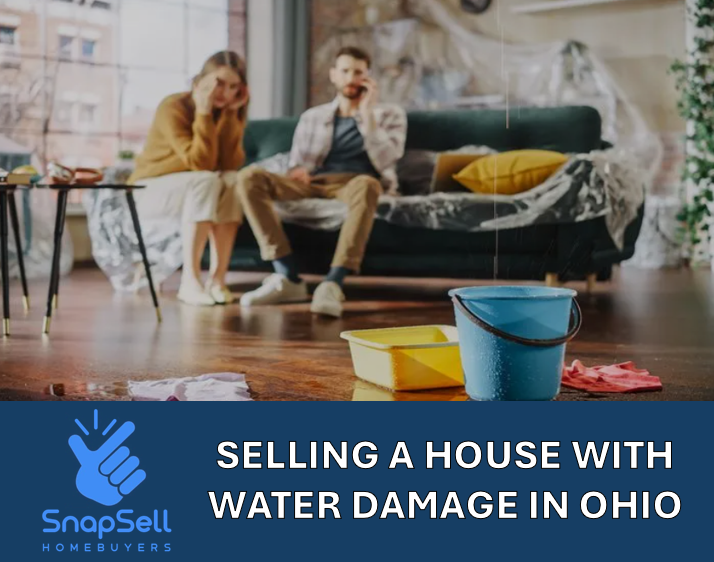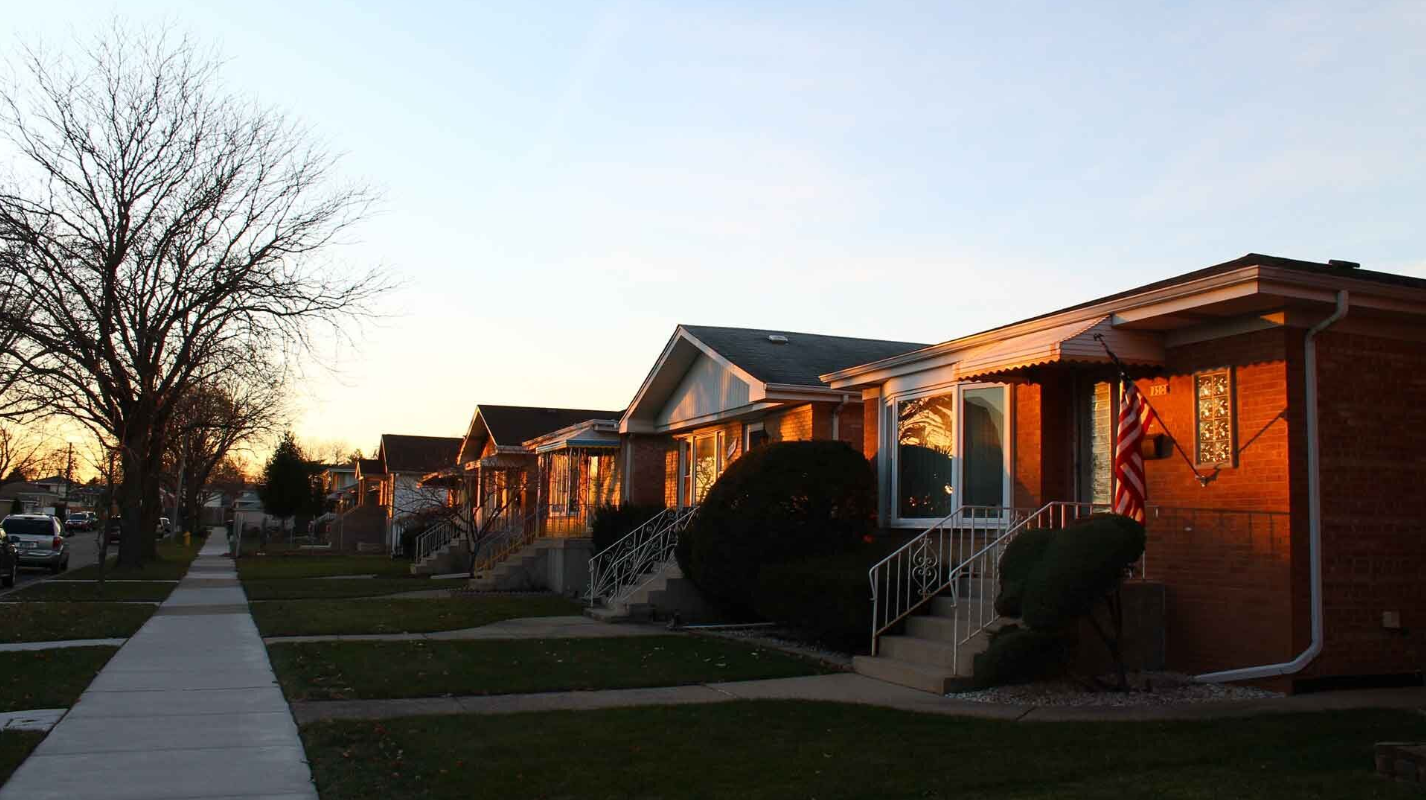
Selling a home can be stressful, and it becomes even more complicated when water damage is involved. In Ohio, homes are often exposed to heavy rain, snowmelt, and seasonal storms that can put properties at risk of leaks or flooding. If your house has water damage, you may be wondering how it affects your ability to sell and whether you should make repairs first. This guide explains everything you need to know about selling a house with water damage in Ohio, from recognizing the signs to understanding your legal obligations.
Identifying the Signs of Water Damage
Many homeowners are surprised to learn that water damage can remain hidden for years before becoming obvious. Some signs are easy to spot, while others require a closer inspection.
Common signs include stains on ceilings or walls, peeling paint, or warped flooring. Musty odors often signal the presence of mold or damp conditions, especially in areas like the basement or crawl space. A water leak in the roof or leaking pipes behind the walls may not be immediately visible, but can lead to serious long-term damage.
Inspecting your home for water damage is an essential first step before listing it for sale. Professional inspections can help confirm the extent of the issue, including whether mold remediation or structural repairs are needed.
Common Causes of Water Damage in Ohio Homes
Water in Ohio homes can result from several sources. Heavy rainstorms and spring flooding often overwhelm gutters and drainage systems, allowing water to seep into basements or weaken the foundation. Leaking pipes, especially in older homes, can go unnoticed until significant foundation damage occurs.
Poor ventilation can also trap moisture in walls, leading to mold growth. Homes with a crawl space are particularly vulnerable, as trapped water can damage wood supports and compromise the structure. Without timely water mitigation, even a small water leak can create major repair costs down the road.
Flood risk varies by location, but properties near rivers, lakes, or low-lying areas may require flood barriers or additional maintenance. Understanding the cause of the damage is critical for both repairs and disclosure to potential buyers.
The Impact of Water Damage on Your Home’s Value
Water damage can reduce a home’s market value. Buyers often see it as a red flag because it suggests possible hidden issues like mold, structural weakness, or foundation damage. Even minor stains can make buyers hesitant to move forward without a price reduction or proof of damage repair.
In real estate transactions, water damage often means a longer time on the market and more negotiation. Some buyers may still be willing to purchase if they plan to renovate, but they typically expect a lower price. On the other hand, taking steps toward water mitigation or professional mold remediation before listing can help protect your asking price.
The extent of the value reduction depends on the severity of the damage and whether repairs were made. A leaking roof or small water leak might have a limited effect, while major flooding without flood insurance coverage could cause a significant decrease in value.
Legal Disclosures When Selling a House with Water Damage in Ohio
Ohio law requires sellers to disclose known defects in their property, including water damage. The Residential Property Disclosure Form asks about past or present leaks, flooding, foundation issues, and repairs. Failure to disclose could lead to legal disputes later if the buyers discover hidden problems.
If your home has had leaking pipes, water in the basement, or signs of foundation damage, you must be honest on the disclosure form. Even if you completed repairs, it’s important to note the history of damage and what was done to address it.
Being transparent not only protects you legally but also builds trust with potential buyers. A realtor experienced in selling homes with damage can guide you through what must be disclosed and how to present the information properly.
Insurance Coverage for Water Damage
Homeowners insurance policies in Ohio often cover sudden water damage, such as a burst pipe, but they usually exclude gradual problems like long-term leaks. Standard policies also do not cover flooding, which requires separate flood insurance.
If your home suffered damage from heavy rain or a rising river, flood insurance might help pay for repairs. Without it, you may be responsible for all costs. Before listing your home, check your policy to see what coverage applies. Documenting the repair or insurance claim process can reassure buyers that the damage was handled properly.
Some buyers may also ask about ongoing flood risk. Providing evidence of flood barriers, sump pumps, or other water mitigation steps can help them feel more confident about purchasing.
Repairing a Water-Damaged Home vs. Selling As-Is
Homeowners often debate whether to invest in repairs or sell the house as-is. Repairing water damage can involve significant costs, depending on the extent of the problem. Damage repair might include replacing drywall, repairing a foundation, or hiring a mold remediation company. Water mitigation steps, such as installing sump pumps or flood barriers, may also be needed to prevent future issues.
Selling as-is means you won’t spend money on repairs, but you’ll likely attract investors or companies that buy houses for cash at a lower price. This route can be faster, especially if you want to avoid months of renovation work. However, if the damage is minor, a few targeted repairs may help you sell for a higher price on the traditional real estate market.
Ultimately, the decision depends on your budget, timeline, and the level of water damage your home has sustained.
How to Remove Water Damage from a House
If you decide to repair water damage before selling, the process often starts with water mitigation. This involves removing standing water, drying out affected areas, and preventing further leaks. Professionals use specialized equipment to ensure moisture doesn’t remain trapped in walls, floors, or the crawl space.
Mold remediation may be necessary if damp conditions allow mold to grow. After cleaning and sanitizing, repairs may include replacing drywall, fixing the roof, or addressing foundation damage.
Homeowners should also consider preventive measures. Installing flood barriers, maintaining gutters, sealing cracks in the foundation, and inspecting leaking pipes regularly can reduce future water risks. The more thorough your repairs, the easier it will be to market the home.
Tips for Successfully Selling a House with Water Damage
Selling a house with water damage in Ohio requires preparation and strategy. First, be transparent about the damage and repairs so you remain compliant with Ohio law.
Second, work with a realtor experienced in selling homes with water or foundation damage. They can help you price the home accurately and market it to the right audience.
Third, decide whether to pursue repairs or sell as-is. If you choose to sell as-is, consider reaching out to investors or companies that buy houses in any condition. If you make repairs, keep records of the work done, including receipts and warranties for damage repair or mold remediation services.
Finally, highlight preventive steps you’ve taken, such as installing sump pumps, upgrading drainage, or improving flood barriers. Demonstrating that you’ve managed the problem responsibly can give buyers peace of mind.
Frequently Asked Questions When Selling a House with Water Damage
Can you sell a house that has water damage?
Yes. You can sell a house with water damage in Ohio, but you must disclose the issue to buyers. Some buyers may request a price reduction, while others, such as investors or companies that buy houses, may be willing to purchase as-is.
Does water damage need to be disclosed?
Yes. Ohio law requires sellers to disclose known material defects, including water damage, even if repairs have been completed.
How much does water damage devalue a house?
It depends on how severe the water damage was and whether proper water mitigation steps and repairs were made. A minor water leak that has been fixed may only have a small impact, while foundation damage or large amounts of water that has seeped into walls can cause larger value reductions.
How can I determine if my home is at risk of flood damage?
You can determine if your home is at risk of flood damage by checking FEMA flood maps, which show designated flood zones, and reviewing your property’s elevation compared to nearby bodies of water. Look at local flood history, drainage patterns, and how close your home is to rivers, creeks, or low-lying areas. Inspect your yard and foundation for signs of poor drainage, such as pooling water after rain. You can also contact your local planning office or insurance provider for detailed risk assessments and consider a professional survey for the most accurate evaluation.
Key Takeaways
At Snap Sell Homebuyers, we can help you sell your water-damaged house as-is. Our team makes the selling process simple and fast so you can move forward without added stress. We’ve helped clients throughout Ohio, including cities like Akron, Cleveland, Canton, Parma, Medina, Massillon, Strongsville, Lakewood, and more. Fill out our form below or call us today at (330) 578-7886 to learn more!

